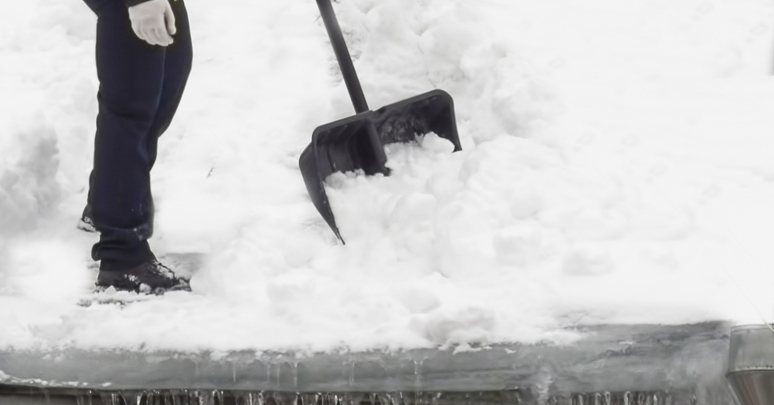Winter weather can bring heavy or repeated snowstorms, which can leave a high amount of snow build-up and ice on a building’s roof. Just a few feet of snow depth may weigh 50 lbs. per square foot or more — imposing excessive loads on any building structure. Blowing and drifting snow can double these loads, and rain on snow can also cause significant load increases. Extreme snow accumulation can cause a building to be loaded beyond design capacity, creating a risk of damage or even collapse.
Most snow-related losses occur at stepped elevations where blowing snow is carried from a higher building roof onto a lower building roof. Such drifting normally occurs where the buildings are attached. Drift loads can form in any of the following locations or conditions:
- On closely adjacent buildings
- On or over ridges
- At valley conditions
- Behind parapets
- Next to rooftop units
- On below-eave canopies or overhangs
- Through post-construction changes or modifications to the building
- Through the addition of higher buildings
- As a result of significant tree growth
- If loads are added after the original design (such as piping, roof units, hanging heaters, etc.)
- If there has been prior structural damage
All of these instances can significantly reduce the capacity of a building to withstand snow load.
Here are our top ten tips for removing snow and ice efficiently and effectively.
Every situation varies, so careful planning must be conducted before snow and ice removal begins.
- Always provide proper safety precautions when performing building maintenance on the roof, especially along the edge. Never send one person on a roof to remove snow alone. Place ladders at the end of the building so sliding snow will not dislodge workers.
- Before removing snow from the roof, remove all hanging icicles from eaves and gutters. These can be quite heavy and cause snow/ice to hang up.
- Remove drifted areas first, down to the level of the snow on the remaining roof. Next, remove the snow from the middle 1/3 of each bay (from eave to eave), beginning with the most snow-packed bay. On gabled buildings, remove snow on both sides of the ridge at the same time. Finally, continue to remove snow from the remainder of the building.
- Remove snow in a pattern that does not cause an unbalanced loading condition. Avoid the large differences in snow depth between adjacent areas of the roof. Remove snow gradually in layers from all over the roof.
- Remove snow from the eave toward the ridge, and be cautious of snow or ice breaking away and sliding down the roof.
- Do not pile shoveled snow on other areas of the roof or other roofs. Keep the dumping area clear of all persons and property.
- Always use plastic shovels. Do not use picks, axes, or other sharp tools.
- Please do not attempt to remove snow by washing it off with a hose. Snow acts as a sponge and will rapidly absorb water, increase roof loads, and potentially cause failure. Also, do not attempt to use chemical salts to remove snow.
- Be careful to avoid hitting fasteners, snow guards, or other roof attachments. And be careful removing snow and ice around ventilator bases, pipe flashing, the rooftop unit supports, conduits, etc., since such items are easily damaged.
- Be aware of skylight system locations. These panels are not intended to support roof foot traffic loads.
Have a project needing attention? Learn more about our Re-Roof options or Find a VP Builder today.
